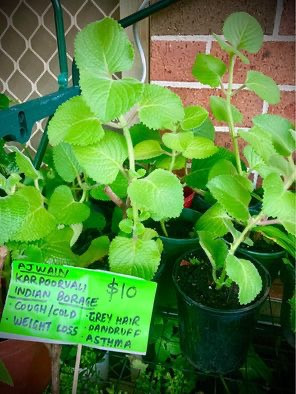



Mint
Category : Herbs
Mint, known scientifically as Mentha, is a versatile and widely appreciated herb used for its refreshing aroma and flavor. Popular in culinary dishes, beverages, and traditional medicines, mint is an easy-to-grow herb that can thrive in various conditions. With its vigorous growth habit, mint can quickly become a lush addition to your garden or an aromatic indoor plant.
Growing Conditions
-
Light Requirements
- Partial Shade to Full Sun: Mint plants prefer part shade but can grow in full sun if watered frequently. In hotter climates, providing some afternoon shade helps prevent leaf scorch and wilting.
-
Temperature and Humidity
- Cool to Warm Temperatures: Mint thrives in a wide range of temperatures but prefers cool to moderate climates. It can tolerate temperatures between 55°F to 70°F (13°C to 21°C).
- Humidity: Mint prefers moderate humidity levels. In dry conditions, regular misting or placing the plant near a humidity source can help maintain moisture levels.
-
Watering
- Consistent Moisture: Mint requires consistently moist soil. Water the plant regularly, ensuring the soil does not dry out completely. However, avoid waterlogging, as it can lead to root rot.
- Drought Tolerance: While somewhat drought-tolerant, mint performs best with regular watering.
-
Soil
- Well-Draining Soil: Mint can adapt to most soil types but prefers rich, well-draining soil. A mix of garden soil and compost works well.
- Soil pH: Prefers slightly acidic to neutral soil (pH 6.0-7.0).
-
Fertilization
- Balanced Fertilizer: Feed mint with a balanced, water-soluble fertilizer every 4-6 weeks during the growing season (spring and summer). Reduce feeding during the fall and winter.
Maintenance and Care
-
Pruning
- Regular Pruning: Regularly pinch or cut back the stems to encourage bushier growth and prevent the plant from becoming leggy. Pruning also helps control the plant's spread.
-
Propagation
- Stem Cuttings: Mint is easily propagated from stem cuttings. Take a cutting of about 4-6 inches, remove the lower leaves, and place it in water or moist soil until roots develop.
- Division: Mint can also be propagated by dividing the root clumps. This is best done in the spring or fall.
-
Pest Control
- Common Pests: Mint is generally pest-resistant but can occasionally be affected by aphids, spider mites, and mint rust. Treat infestations with insecticidal soap or neem oil.
Culinary and Medicinal Uses
-
Culinary Uses
- Flavoring: Mint leaves are widely used to flavor a variety of dishes, including salads, sauces, beverages, and desserts. Its refreshing taste makes it a popular choice for teas and cocktails.
- Garnish: Fresh mint leaves make an attractive and aromatic garnish for a variety of dishes.
-
Medicinal Properties
- Digestive Aid: Mint tea is known for its digestive benefits, helping to alleviate indigestion, nausea, and stomach cramps.
- Respiratory Health: The menthol in mint can help relieve respiratory issues such as congestion and sinusitis.
- Anti-inflammatory and Antimicrobial: Mint has anti-inflammatory and antimicrobial properties, making it useful for treating minor cuts, wounds, and skin irritations.
Conclusion
Mint is a versatile and hardy herb that offers numerous culinary and medicinal benefits. Its refreshing aroma and flavor make it a popular choice for gardens and kitchens alike. With proper care, including suitable light, temperature, humidity, and regular maintenance, mint can thrive and provide a wealth of uses for home gardeners and culinary enthusiasts. Whether grown in the garden or in containers, mint is a valuable addition to any herb collection.
Price : $12 $10
Out of Stock









